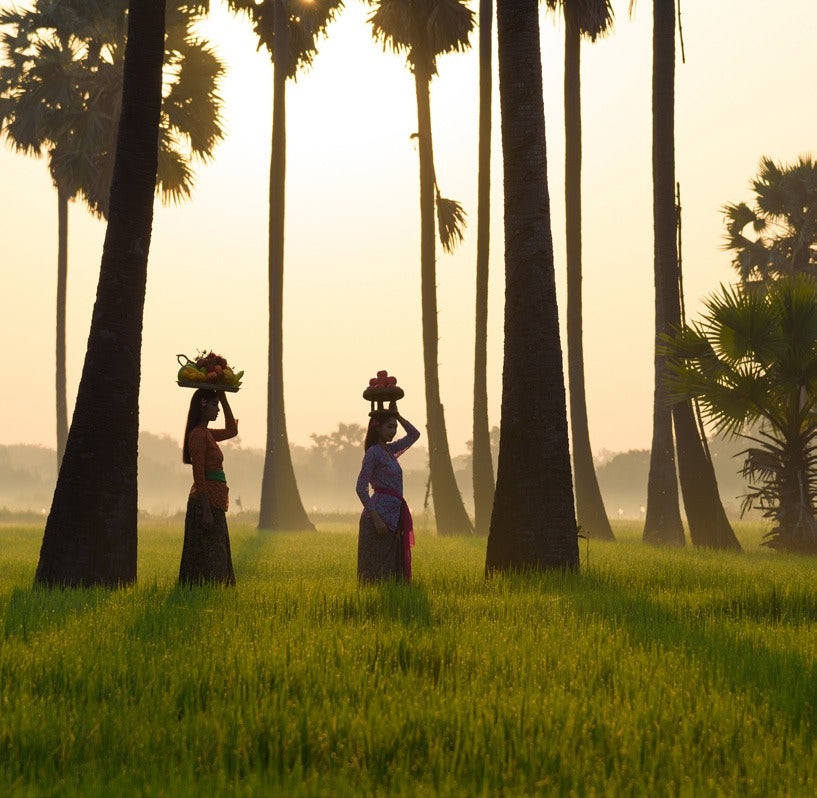INDONESIA - EXOTIC SEAS & STRANGE BEASTS

Within this nation of some 14,000 islands, stretching wider than the continental United States, there are about 50 locally registered vessels. Except for boats participating in the annual Darwin Ambon Yacht Race, only another 50 foreign, privately owned yachts venture into Indonesia every year.
Since Indonesia’s independence from the Dutch in 1947, it’s had a daunting reputation for yachtsmen due to labyrinthine bureaucracy, differing rules island to island, security issues and unreliable bunkering. In recent years, however, these impediments began dissolving and last year the Indonesian government did much to streamline the process of obtaining permits. It no longer requires a massive bond. Quality shore support providers, such as The Lighthouse Consultancy or Indonusa Marine, can assist with paperwork and port arrangements. Fuel and food are now available in even the more remote local ports. Fish and tropical produce are mouthwateringly fresh. Despite an undeserved reputation for piracy, there have been no security issues in the region for more than a decade. The more distant the island, the happier its genuine, friendly people are to see you.
Historians tell that long before Magellan’s fleet circumnavigated the world, it was an Omani captain’s adventures in Indonesian waters that gave rise to the tales of Sinbad. An “old salt” is still referred to as a “sailor of the Seven Seas.” While there are many different cultures that used this term throughout the centuries, one such use derives from the seas surrounding the Spice Islands of eastern Indonesia. In the early days of exploration, these were the most sought-after seas in the world for the spice trade, which was a powerful force in the global economy.
Christopher Columbus was searching for a shorter route to the Banda Islands, the sole source of nutmeg —considered to be the gold of the spice trade — when he inadvertently bumped into America. The scent of early European history still lingers in the Spice Islands. Banda Island — with its colonial architecture nestled beneath a smoking volcano and embedded in both the primary forest and ancient nutmeg groves — is a heavenly thing to find while bearing dead ahead in the heart of the Banda Sea.
Indonesia is well noted as the mother of all archipelagos. Many of its 14,000-plus tropical islands remain untouched by outside influences. It is one of the world’s most ethnically diverse nations, ranging from the sophisticated Javanese and Balinese with their ancient cultures to the pale-skinned jungle Dyaks of Borneo to the traditional Melanesian tribes of Indonesia’s remote West Papua. Here you’ll find exotic and unique wildlife galore. It’s rare that you’ll have to share these anchorages of splendor as it’s unlikely that you’ll encounter many other yachts in this not-so-often explored region.
Eastern Indonesia, from Bali to New Guinea, is part of the Coral Triangle; the world’s “womb of marine species’ generation and diversity.” It is barely one percent of the planet’s surface area, but it contains some 70 percent of all known coral species and nearly 40 percent of all saltwater fish species. Sail these waters with ichthyologists and they are likely to find you a new species.
Another interesting tidbit about the area is that the Wallace Line, a vertical zoographical divider, runs between Borneo and Sulawesi and between Bali and Lombok. To the west of that line, you will find the great apes, otherwise known as the “red men of the forest,” elephants, rhinos and Sumatran tigers — all characteristic fauna of mainland Southeast Asia. You can observe orangutans, proboscis monkeys, and other exotic Borneo creatures by sailing upriver. Hike through overhanging forest and you will reach the feeding stations of Camp Leakey, where Dr. Biruté Galdikas has long operated her orangutan rehabilitation program.
East of the Wallace Line, you will find completely different Australasian fauna and flora. This includes Birds of Paradise — if you are lucky you can witness them performing their mating dance — the giant, flightless Cassowary bird with three razor talons on each claw, marsupials, such as cuscus and tree kangaroos and incredibly large insecteating plants. Central Indonesia’s islands, located east of the Wallace Line, are home to crumbling fortresses with rusting cannons. Imposing, early colonial architecture with marble floors and disintegrating chandeliers are reminders of the prosperous days of spice trading.
During an Indonesian adventure, you can dive or snorkel the warm waters, thanks to hydrothermal volcanic vents off Northern Sulawesi, where the Coelacanth — a 360-million-year-old ‘dinosaur fish’— was recently rediscovered. Just off south Sulawesi you’ll come across the amazing shape-shifting “mimic octopus,” which was found and described only a decade ago. You can sail among great whales such as the blue, sperm and the inquisitive minke. On dark moons, cruise through bioluminescent seas of startling brightness. And if you’re daring, you can swim with whale sharks (which are neither shark nor whale, but simply 50-foot fish) in Cenderawasih Bay where they have bonded with the local fishermen, for whom they are totemic beasts.
So, it seems the seas off Indonesia’s beautiful islands truly are brining with strange beasts. These islands have so much to offer and there are very few means by which to explore them as comprehensively as on board a luxury yacht.
Read Next
Navigator Newsletter Stay informed on all things yachting and luxury lifestyle with the bi-monthly Navigator newsletters.
